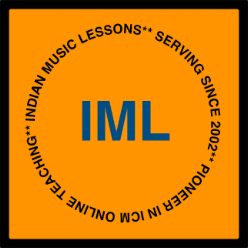Responses from Professor (Pt.) Sanjoy Bandopadhyay’s pen
Question: Is there a way to practice the expressive aspects alongside the technical and virtuosic elements of ragas, both in general and for those that are lesser-known and less frequently taught, especially when a learner has limited access to feedback from scholars and limited resources on those specific ragas? I recall some scholars mentioning that bandishes reveal their guidance once a practitioner reaches a certain level of capability, experience, and exposure. What would be the best approach(es), then, along with / beyond relying on bandishes, to empower oneself as a self-Guru-Shishya in this context? [Sai Sudeep Das, India]
Submitted: 15 Nov. 2024 | Responded: 16 Nov. 2024
Methodical Approach for Mastery in Raga Rendering through Self-mentoring
You have raised a very interesting question. Traditionally, the Guru plays a very important role in transferring musical knowledge. But there are a handful of exceptions. I must tell you that identifying an able Guru is a challenge in itself. I understand that self-mentoring raga music requires well-directed and intelligent musical efforts. Also, the person who wishes to self-mentor must possess some pre-requisites qualities.
- Core Requirements for Self-Guided Raga Mastery:
To achieve proficiency in both common and rare ragas, you need to develop specific skills and knowledge:
- Understanding the Raga Rendering Process: Have a clear understanding of how to unfold a raga, including its progression and expression.
- Musically Sensitive Hearing: Enhance your listening abilities to identify nuances, microtones, and subtleties in raga performances.
- Converting Notations into Musical Expressions: Translate written notations into effective and expressive audio performances.
- Analytical Skills: Develop the ability to analyze sample raga renderings for their structure, creativity, and adherence to raga lakshanas (characteristics).
2. Essential Components for Raga Performance:
The critical elements you need to focus on include:
- Raga Lakshanas: Gather detailed information about the specific raga’s structure, including its arohana, avarohana, and characteristic phrases.
- Bandishes: Learn compositions in various tempos (laya) and rhythm cycles (talas) to understand the raga’s expression across different frameworks.
- Svarochchar: Master the traditional intonations or svarochcharas specific to each raga, which add uniqueness and authenticity to your performance.
3. Strategy for Self-Learning and Mastery:
Identify and Gather Resources:
- Use a mix of audio, audio, audio-visual, and text-based resources. These can be found on platforms like YouTube, traditional music books, or other online repositories.
- Analyze and Decode Raga Elements:
- To study the nuances of raga development, break down the identified resources. Focus on elements like chalans and different ornamentations.
4. Utilize Bandishes from Diverse Sources:
Access bandishes from recordings by stalwart musicians or notations available in traditional books. Use both these resources artistically and intelligently to expand your understanding of the raga.
5. When converting notations to audio renditions, validate your svara-uchcharas or intonations against the recorded bandishes of traditional musicians to ensure authenticity.
- Convert Notations to Practice:
- Study notations from traditional music books. Transform these into audio renditions.
- Transmusicalize (i.e., adapt) notations to fit your unique interpretative style while adhering to the raga’s structure.
6. Cross-Validate Authenticity:
- Compare your renditions with existing bandish recordings to ensure fidelity to the raga’s form.
- Use critical listening to identify areas where your rendition aligns or deviates from traditional expressions.
7. Create and Expand Raga Body:
- Develop the raga’s body using chalanas and their variations, ensuring a creative yet authentic exploration.
- Experiment with different improvisation techniques to deepen your engagement with the raga.
8. Continuous Review and Correction:
- Regularly review your recordings to self-assess and identify areas for improvement.
- Implement corrective measures and updates based on your assessments to refine your performance.
9. Practice with Accompaniments:
- Engage in consistent practice sessions with tabla or tanpura accompaniments to enhance rhythmic stability and melodic flow.
- This practice supports neuromapping, helping to internalize the raga’s structure and nuances.
10. Key Practices for Effective Self-Mentoring:
- Approach your learning with intelligence, thoughtfulness, and artistry.
- Ensure a balanced focus on technical precision and creative expression.
- Develop a disciplined routine incorporating the above strategies to build proficiency gradually.
Following this structured approach will help you master both common and rare ragas. Combining resources, intelligent analysis, and continuous practice will be essential for achieving a high level of musical proficiency.
You Question – We Answer | Q-A on Rudimentaries | Q-A on Content Development | Q-A on Connecting Audiences | Others Relating Raga Music Recitals

![Q-A on Raga Music Practicalities [Raga Content Development]](https://indianmusiclessons.com/wp-content/uploads/2024/11/Question-Answer-825x468.jpg)